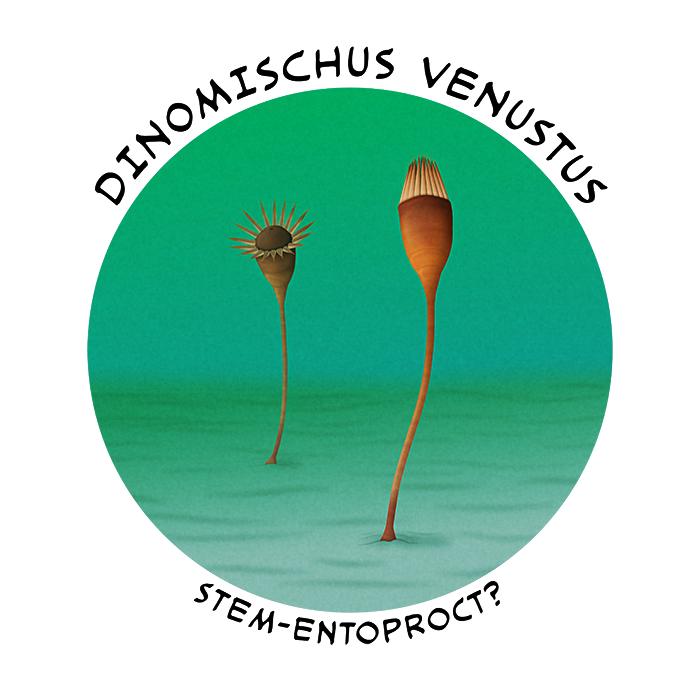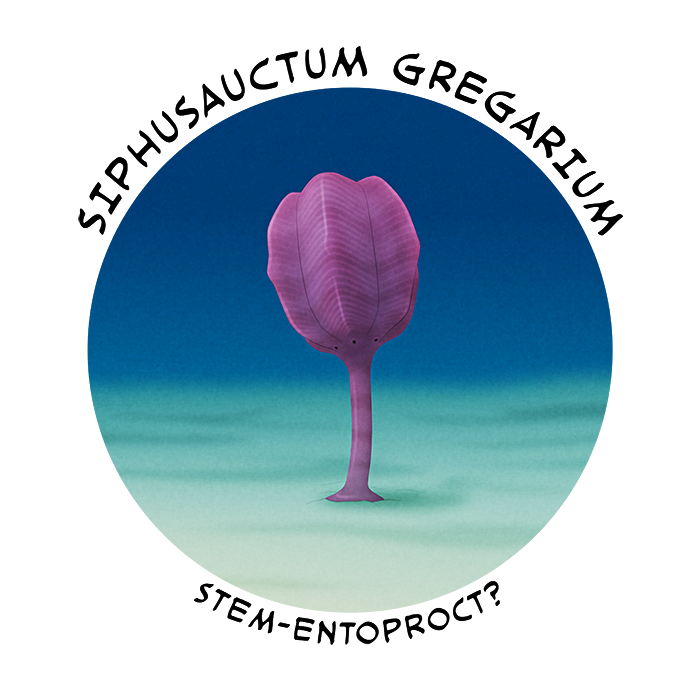The only Cambrian fossil species that seems to be closely related to the entoprocts is Cotyledion, but there are several other enigmatic animals that have also been tentatively allied with the group as members of early stem lineages.

Dinomischus venustus is known from the Chinese Chengjiang fossil deposits (~518 million years ago). Another species in the same genus, Dinomischus isolatus, is known from the Canadian Burgess Shale (~508 million years ago) and the similarly-aged Chinese Kaili Biota, with a possible additional occurrence from Czechia (~513 million years ago).
It had a cup-shaped body on a long stalk, reaching up to 10cm tall (4″), with 18 stiff plate-like “petals” around its top that seem to have encircled both its mouth and anus. Some newer specimens from Chengjiang also show feathery soft-tissue tentacles running along the inside surface of the petals, and what may be a bulbous “oral cone” around the mouth.

Siphusauctum gregarium was discovered in the Canadian Burgess Shale fossil deposits (~508 million years ago), with a closely related species Siphusauctum lloydguntheri also known from Utah (~507-506 million years ago).
Up to around 20cm tall (~8″), it was shaped like a six-lobed tulip (or a bell pepper) on a stalk that attached it to the seafloor. Openings on its underside pulled in water, passed it over filter-feeding comb-like structures inside its body, and then expelled it out the top.
Thousands of specimens have been found, and it seems to have been a fairly abundant animal that often occurred in dense groups.
The entoproct affinities of both of these animals are controversial, however, and they’re often just considered to be “weird wonders” with no clear classification.
One study has also proposed that they might actually be relatives of comb jellies, with similarities to a recently-discovered species called Daihua sanqiong.
